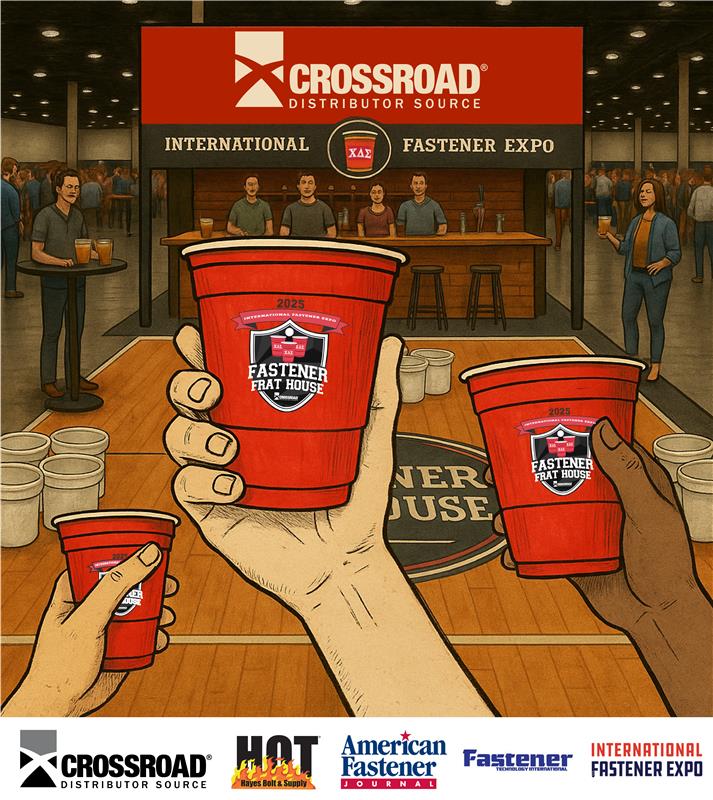All fasteners need to last at least as long as the items to which they’re attached. You rely on fasteners to hold items together and create structural integrity. If a fastener corrodes it degrades that structural integrity and could cause the entire item to fail.
Unfortunately, corrosion is not something you can completely stop. There are things you can do to slow down fastener corrosion – depending on the type of corrosion involved.
What Causes Corrosion
Corrosion is the natural deterioration of a metal when it reacts with certain elements in its environment, such as oxygen. Corrosion can also occur when metal reacts with an electric current.
During this electrochemical process the metal is converted into a more stable substance, such as oxide or hydroxide. The most common type of corrosion occurs when iron reacts with oxygen, which creates iron oxide or rust. This can be oxygen in the air or oxygen in water.
Corrosion can also occur when an electrical current moves between a high-potential metal and a low-potential metal. This can happen with fasteners made from high-potential metal but installed in low-potential metal.
Corrosion isn’t limited to metal. It can also occur in non-metallic substances, including certain polymers and ceramics. All corrosion affects the integrity of the substance, often weakening it.
Different Types of Fastener Corrosion
There are several different types of corrosion you may have to deal with, depending on where and how that corrosion occurs.
Galvanic Corrosion
Galvanic corrosion occurs when two different metals come into contact in the presence of an electrolyte. The electrolyte is a mixture that contains salt. When electricity flows from one metal to the other it leaves behind a corroded surface. This type of corrosion can be reduced by the use of non-conductive coatings on metal surfaces.
Uniform Corrosion
Uniform corrosion appears across the entire surface area of a metal fastener. It can be reduced by coating or plating the surface of the fastener.
Pitting Corrosion
Pitting corrosion describes those tiny holes that sometimes appear on the surface of a fastener. The pitting is often too small to detect until it spreads and becomes a bigger issue. It can be reduced by keeping the metal surfaces clean.
Crevice Corrosion
Crevice occurs within any small openings in a fastener, especially if the area is not well-vented or an electrolyte solution is present. This type of corrosion typically appears in these small gaps but can rapidly progress throughout adjoining areas of the fastener. Crevice corrosion can be reduced by avoiding the use of such crevices or sealing them with caulking compounds.
Stress Corrosion Cracking
Stress corrosion cracking occurs when there’s too much tension on a fastener. This can cause metal parts to crack or rub together, removing any protecting coating. The resulting cracking can also lead to crevice corrosion and make the fastener more prone to failure. This type of corrosion can be minimized by not over tightening the fastener.
Effects of Corrosion on Fasteners
As noted, corrosion can affect metal fasteners in a number of ways. A corroded fastener isn’t a big deal in and of itself, as fasteners are low-cost and easy to replace. However, a corrosion-related fastener failure can result in a more costly failure in the item that the fastener was holding together.
Consider the impact if corrosion caused a fastener to fail in a car chassis. Or if a fastener failed because of corrosion in a high-rise elevator. Or if a fastener used in a bridge support experienced corrosion failure. The results could be catastrophic.Unfortunately, fasteners of all kinds fail everyday because of corrosion. According to a NACE International IMPACT study, the global cost of corrosion is more than $2.5 trillion annually. That’s about 3.4% of global GDP – not including the environmental costs of said corrosion.
How to Reduce Fastener Corrosion
The IMPACT study estimates that 15%-35% of the global cost of corrosion could be saved by employing readily-available corrosion control procedures. You can employ these procedures to reduce, if not totally prevent, corrosion in the fasteners you produce and use.
Use the Right Metals
It’s important to use the proper materials for your fasteners. Consider the environment in which the fastener will be employed and use the appropriate metals.
If the fasteners are adjacent to or fastening together other metallic materials, you should choose metals that are similar in electric potential to those other metals. The goal is to reduce the flow of electricity between the metals, thus slowing the rate of corrosion.
Use a Suitable Surface Coating
Another effective way to reduce corrosion is to coat or otherwise insulate the metal surfaces of your fasteners. The right coating creates a seal between the surrounding environment – including other metals – and the fastener’s base metal.
There are many ways to insulate the metal surface of a fastener, including:
- Dielectric coating
- Non-conductive paint
- Insulation
These protections reduce the rate of corrosion by establishing a barrier between the fastener and any corrosive materials. They also help to galvanize the fastener by inhibiting any electrical current.
Consider Corrosion in Your Designs
Reducing corrosion should be a major factor in designing a fastener. In particular, you want to avoid creating gaps or fissures where crevice corrosion can occur.
Use Proper Installation Techniques
Finally, it’s important that fasteners are installed properly. An improper installation that creates uneven or excessive pressure can lead to stress corrosion cracking. Avoid over-tightening fasteners, as well as accidentally scratching the metal surface. It’s important that all fasteners are properly and evenly tightened and that any surface coating is not comprised by a sloppy installation.
International Fastener Expo Can Connect You with the Latest Anti-Corrosion Solutions
At International Fastener Expo 2022, October 17 – 19 at Mandalay Bay, Las Vegas, you can learn more about anti-corrosion technologies and other new fastener developments. Sign Up to be the first to know when registration is open!








